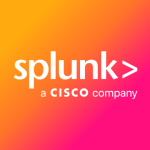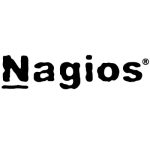What is our primary use case?
If you want to grant access for clients to the MSP service provider, you can use this solution. For example, if the client wants to monitor the net flow and net flow traffic with PRTG, you can analyze this traffic for them.
How has it helped my organization?
If you have a problem with your slow network, you can get visibility on the net flow and SNMP protocols in order to review them and then handle troubleshooting specifically about the issue.
What is most valuable?
We like the monitoring with the net flow and net flow protocols and SNMP protocols.
The health check functionality is currently very good.
Its initial setup process is fast and easy.
It is stable.
The scalability is pretty good.
What needs improvement?
The technical support services could be better. The service operation center also needs to be improved.
Users need to buy the more expensive licenses if they expect to be able to scale.
We would like to see more advanced features. It would be great if they can help us exclude some protocols if you want to configure some scripts.
For how long have I used the solution?
I've been using the solution for two to four years.
What do I think about the stability of the solution?
This is a stable product. You only need to deploy remote probes around the network and infrastructure, so you need to add enough remote probes to meet your needs, however, if you do that, it remains stable.
What do I think about the scalability of the solution?
You can scale the solution if you buy the most expensive licenses or limited sensors.
We have 12 people using the solution within the company.
At this time, we do have plans to increase usage and add clients to the MSP.
How are customer service and support?
Technical support could be better.
How would you rate customer service and support?
Which solution did I use previously and why did I switch?
I've previously used HPE and SolarWinds products in the past.
How was the initial setup?
The initial setup is really fast. We didn't need to download the setup on the webpage. You just click through. It is traditionally Vista for Windows.
We have ten users that are capable of handling maintenance tasks.
What about the implementation team?
We had a consultant assist us during the initial setup.
What was our ROI?
We have seen an ROI as it allows us to avoid downtime. When you have a problem with your network, and it goes down, it's a really big problem.
What's my experience with pricing, setup cost, and licensing?
The solution is very cheap. You can buy 600 sensors for $1000 or a bit more.
Which other solutions did I evaluate?
We did not previously evaluate other solutions.
What other advice do I have?
Currently, I have Privileged Access Management solutions, Identity solutions, Privileged Cloud solutions, and Identity solutions. We use both cloud and on-premises deployments.
I'd advise new users to implement a hybrid architecture. That way, you can get visibility around cloud solutions and on-premise solutions. It's very important to get visibility around these architectures.
I'd rate the solution ten out of ten.
Which deployment model are you using for this solution?
Hybrid Cloud
Disclosure: My company does not have a business relationship with this vendor other than being a customer.




















